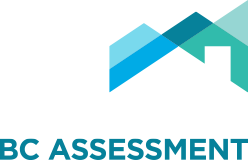
BC Assessment is responsible for assessing over 2 million properties in British Columbia as of July 1 each year. The assessment process in British Columbia is governed by the Assessment Act of British Columbia.
BC Assessment determines assessment values for all Industrial, Commercial & Investment Properties, or ICI for short. ICI properties include everything from: warehouses and manufacturing facilities to office buildings, shopping malls, small storefront shops, rental apartment buildings, hotels and more. All properties in British Columbia are assessed by a professional appraiser from BC Assessment.
When valuing an ICI property, BC Assessment considers the same things that a purchaser would. This includes (but is not limited to), the following:
- Size,
- Age,
- Location,
- Condition of the buildings,
- The market capitalization rate (the potential rate of return expected on a real estate investment),
- But also the rental income that is (or could be) generated.
For ICI properties, appraisers use the three approaches to real estate valuation to determine the market value (or the likely selling price) of a property as of July 1st. The three approaches to value are:
Direct Comparison Approach, Cost Approach, and Income Approach. Please note, the valuation approach applied depends on how a property trades in the market place. The video below contains an example of how BC Assessment would estimate the market value for a property that trades on the Income Approach.

Commercial Property Assessment Example:
Using the
Income Approach, let’s take a look at how BC Assessment
would estimate the market value of Ms. Lalli’s property.
Her building is tenanted by two businesses:
a café and a clothing store. Each business is leasing the same amount of space (1,000 sq/ft), and jointly provide
$40,000 of annual rent income to the landlord.The tenants are both paying Ms. Lalli for a Triple Net Lease, which means they pay the rent, pay some maintenance costs and pay the property tax.
BC Assessment looks at other similar sized properties in comparable locations. Condition and exposure also matter. The rent that Ms. Lalli’s property earns appears to be typical for a building in its location, with its visibility along with its size, age, condition and use. BC Assessment’s appraiser accepts that this represents ‘market rent’.
There are costs associated with leasing the space, and allowances or deductions are made for vacancy and expenses. For Ms. Lalli’s property, let’s say a small percentage is deducted to cover any vacancy & expenses, netting her income down to about
$37,000 annually. All this information allows BC Assessment to estimate the Net Operating Income for Ms. Lalli’s property.
Similar to any investment, Ms. Lalli’s property earns a return over time. This return, or ratio between income and selling price, is known as a market capitalization rate or Cap rate. In Ms. Lalli’s neighbourhood, recent sales have indicated Cap rates are around 3% to 4% for similar properties. So, let’s say Ms. Lalli and any potential buyer would expect a return of 3.50% for Ms. Lalli’s property.
To determine the market value (or an estimate of price that a potential buyer would be willing to pay and Ms. Lalli would be willing to accept), BC Assessment calculates:
The result would be an assessment value of $1,057,000 for her property.
For assessment purposes, BC Assessment must split the land and building values which are then added together for the total value.
For Ms. Lalli’s property, remember that the total value was calculated at $1,057,000, so if the appraiser estimates that the land value, on its own, is $500,000, that means the remaining difference would be $557,000 to account for the improvement amount, or buildings, for a total assessment of $1,057,000. These assessed values would then appear on Ms. Lalli’s Notice of Assessment in January.
 Learn more about this example in this video.
Learn more about this example in this video.
RELATED INFORMATION:

